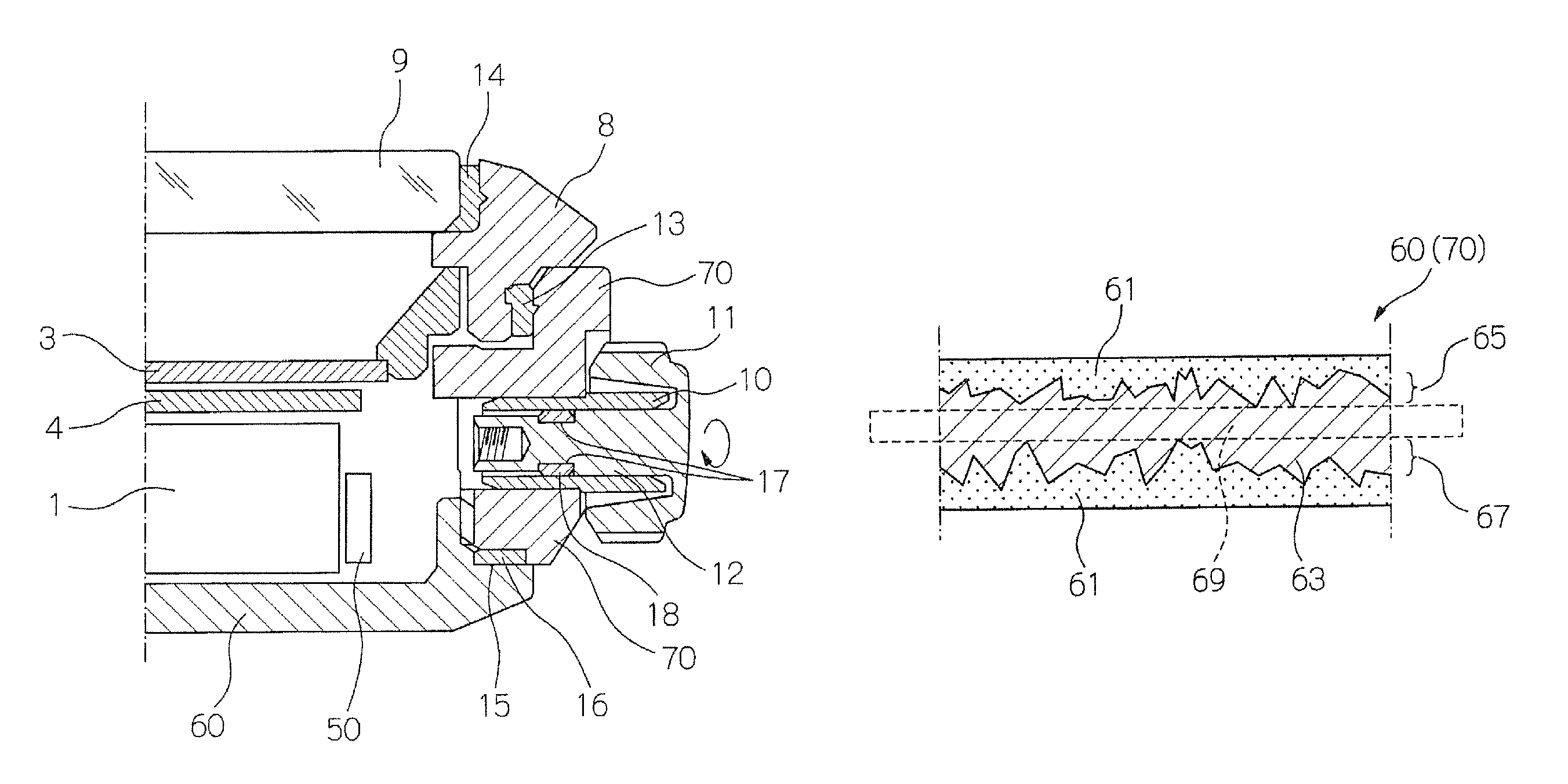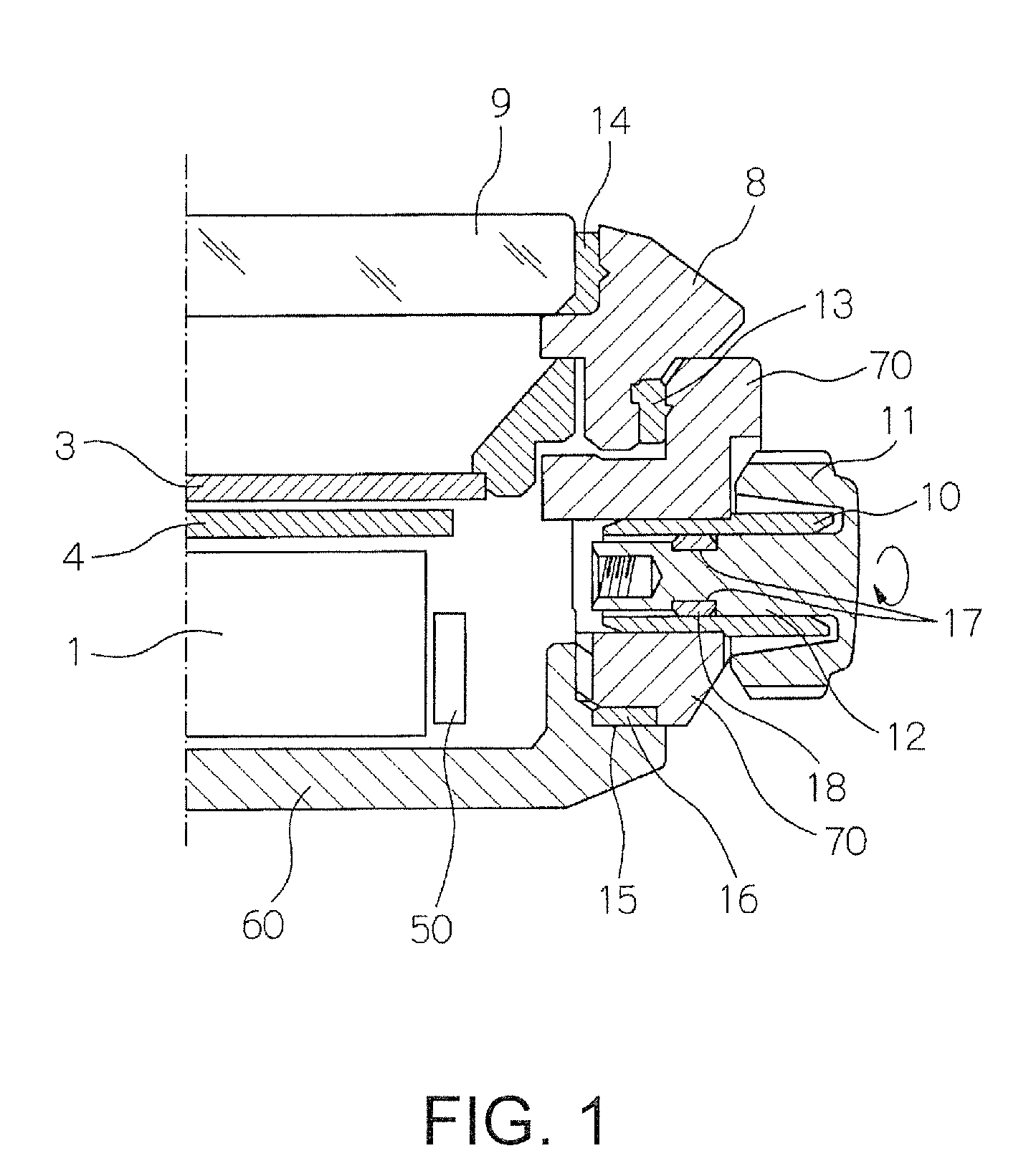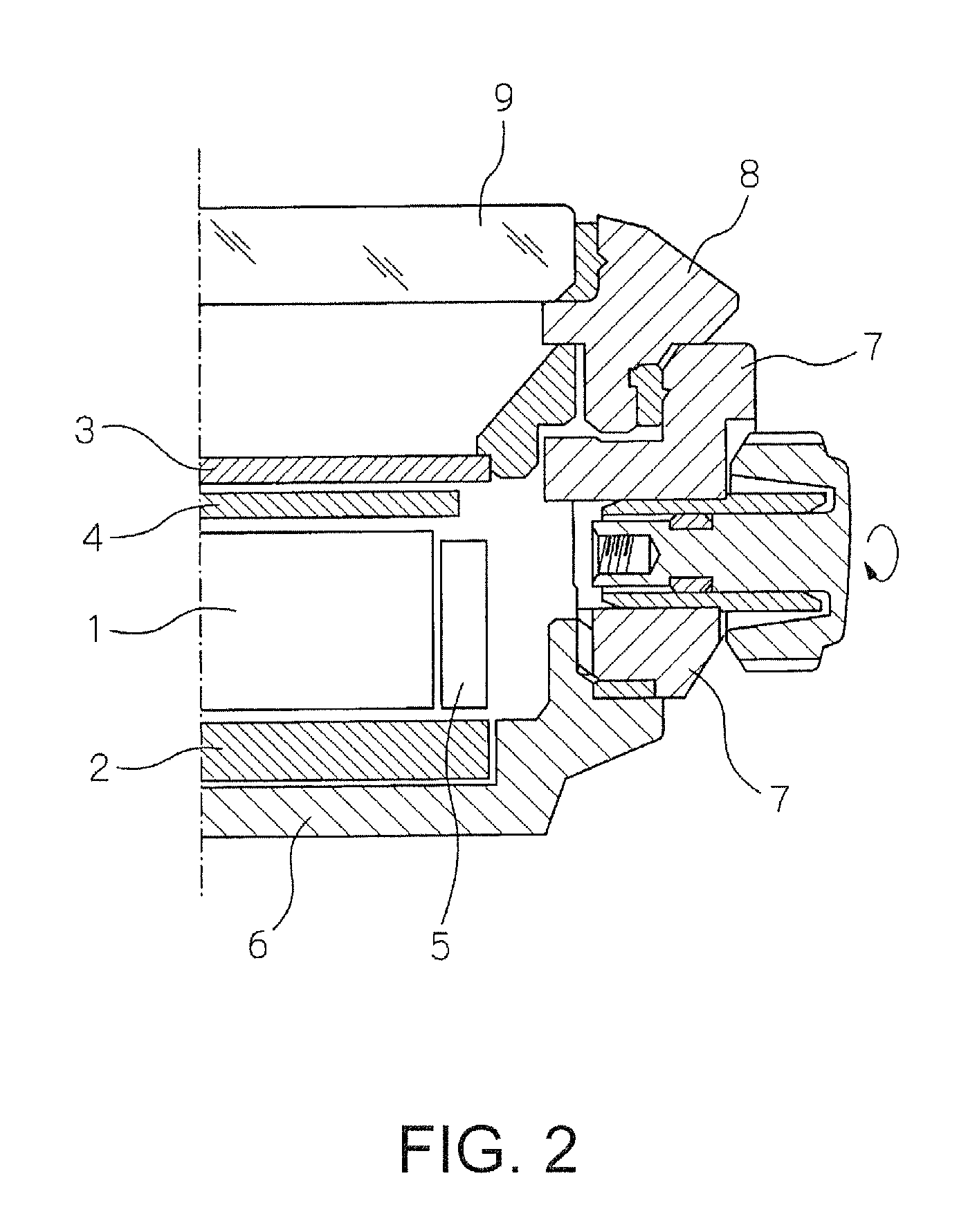Device and a method of manufacturing a housing material
a manufacturing method and technology applied in the field of devices and a manufacturing method of a housing material, can solve the problems of not offering the hardness, corrosion resistance, appearance, other surface properties, and material not practical for use as a case member, and achieve the effect of easy processing, excellent freedom of product design, and easy reduction of product siz
- Summary
- Abstract
- Description
- Claims
- Application Information
AI Technical Summary
Benefits of technology
Problems solved by technology
Method used
Image
Examples
example 1
[0123]A housing component, specifically the back cover of a timepiece, was manufactured using the method described below.
[0124]A ferritic stainless steel substrate made from an Fe—Cr alloy of primarily Fe was prepared. The composition of this substrate was Fe, 18.3 wt % Cr, 2.25 wt % Mo, 0.15 wt % Nb, 0.26 wt % Mn, 0.006 wt % C, 0.001 wt % S, 0.022 wt % P, 0.21 wt % Si, and was primarily ferrite phase. The content of any element also contained as an unavoidable impurity was less than 0.001 wt %.
[0125]This substrate was then forged to produce a substrate with the desired shape of the back cover for a wristwatch, and was then ground and polished as needed.
[0126]The substrate was then washed. The substrate was first washed by alkaline electrolytic degreasing for 30 seconds followed by alkaline immersion degreasing for 30 seconds. The substrate was then neutralized for 10 seconds, washed in water for 10 seconds, and then washed in demineralized water for 10 seconds.
[0127]An austenitizin...
examples 2 to 7
[0134]Examples 2 to 7 differed from the first example described above only in the composition of the Fe—Cr alloy ferritic stainless steel used for the substrate and the conditions of the austenitizing process as shown in Table 1. Other than these differences, back covers for a wristwatch were manufactured in the same way as described in example 1 above.
[0135]Comparison 1
[0136]Other than not applying the austenitizing process, the back cover for a wristwatch according to this first comparison sample was manufactured in the same way as the first example described above. More specifically, the back cover resulting from the forging process was used as the back cover of the wristwatch.
[0137]Comparison 2
[0138]The back cover of a wristwatch was manufactured by the process described below.
[0139]A ferritic stainless steel metal powder (primarily Fe with a composition of Fe, 21.63 wt % Cr, 2.28 wt % Mo, 0.12 wt % Nb, 0.06 wt % S, 0.45 wt % Mn, 0.8 wt % Si, 0.018 wt % P, 0.04 wt % C) was prepa...
PUM
| Property | Measurement | Unit |
|---|---|---|
| thick | aaaaa | aaaaa |
| thickness | aaaaa | aaaaa |
| thickness | aaaaa | aaaaa |
Abstract
Description
Claims
Application Information
 Login to View More
Login to View More - R&D
- Intellectual Property
- Life Sciences
- Materials
- Tech Scout
- Unparalleled Data Quality
- Higher Quality Content
- 60% Fewer Hallucinations
Browse by: Latest US Patents, China's latest patents, Technical Efficacy Thesaurus, Application Domain, Technology Topic, Popular Technical Reports.
© 2025 PatSnap. All rights reserved.Legal|Privacy policy|Modern Slavery Act Transparency Statement|Sitemap|About US| Contact US: help@patsnap.com



